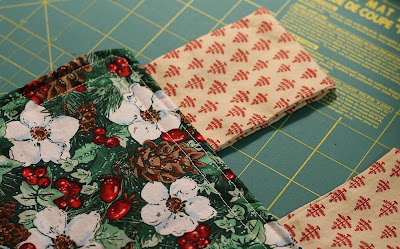I posted the first part of this tutorial over a month ago, and time has somehow gotten away from me over the holidays, so I'm finally posting the second half. In the first part of the tutorial, I showed how I made the raglan shirt. Here, I'll show how I made the pants.
What you need:
- XL men's shirt (plenty of material for size 2T PJ's)
- pair of pajamas to use as pattern pieces
- matching thread
- ball-point needle for sewing knits
- 1/2 yard of 3/4 inch elastic
Let's get sewing:
1. Lay out the men's t-shirt flat. Place your pattern pajama pants on top of one sleeve, lining up the hem of the pants and the hem of the sleeve. I used the whole width of the sleeve, so I didn't have to worry about sewing the inseam of the pants. I cut about 2 inches above the top of the pants to allow enough fabric to form the elastic casing.
Repeat this step on the other sleeve.
2. Turn one pant leg inside-out. Place the right-side out leg inside the other (it should look like the pic). Match the U-shaped seam and sew, using a 1/2 inch seam allowance.
I originally used a straight stitch, but then did some reading and found that a lot of people have problems with straight stitches popping on knits. So, I added a zig-zag stitch, too. (I don't think this was the best solution, but using this method I didn't have to actually make a decision about which stitch to use.)
3. Turn the pants inside-out. Fold down the top edge 1/2", then another 1" to form the casing. Topstitch 1/8" away from the edge, leaving a 3" opening.
4. Use a safety pin to thread the elastic through.
5. Overlap the elastic ends 1/2" and sew together. Tuck inside the casing and sew closed.
Turn your pants right-side out, and your little man PJ's are ready to go!
-Lily
Linked up at some of the great blogs on my sidebar!






















































